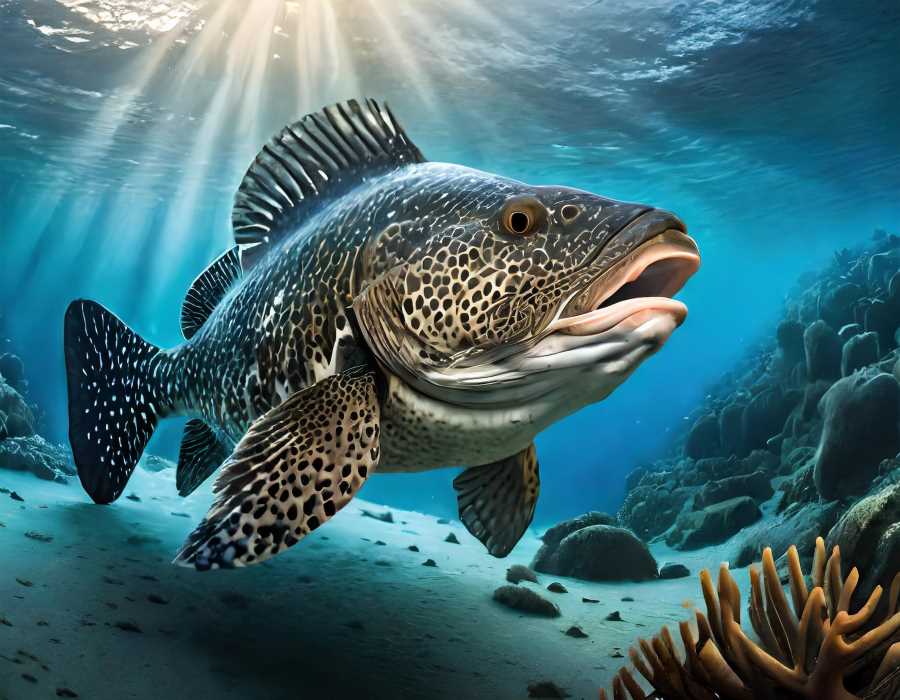How Otoliths Help Save the King of the Reef, the Giant Grouper
Otoliths, the “black boxes” of fish, reveal secrets of their age, habitat, and even heavy metal exposure. ️️ Using these time capsules, scientists are piecing together the life story of the endangered giant grouper to save these gentle giants.

Imagine a world where fish, instead of gracefully gliding through the waves, sported tiny black boxes tucked away in their skulls. These black boxes, my friends, are the otoliths, and they hold the secrets of a fish's life, etched in rings like the memoirs of a seasoned seafaring adventurer.
Now, unlike us landlubbers who stop growing taller after high school (well, most of us), fish keep adding inches (or should I say, fins?) throughout their lives. So, size isn't the best way to tell how old a fish is. This is where the otoliths come in, these little calcium carbonate detectives snuggled in the fish's inner ear.
Think of them as nature's tiny time capsules. As the fish grows, layers of minerals and proteins build up on the otoliths, creating rings similar to those on a tree trunk. By counting these rings under a microscope, scientists can crack the code of a fish's age, revealing its life story in a blink (or should I say, a fin-flick?) of an eye.
But otoliths don't just tell us how old a fish is; they're like fish fortune cookies, offering glimpses into its habitat, temperature preferences, and even whether it hung out with any heavy metal-loving buddies (not the musical kind, unfortunately). They can even reveal the fish's species, making them the ultimate underwater ID cards.
Now, let's elaborate on the giant grouper, also known as the “fishfish” (because, well, it's so big it's basically two fish in one!). This gentle giant, reaching over 8 feet and weighing in at a whopping 550 pounds, used to be the king of the Mexican Pacific reefs. But sadly, overfishing has pushed it to the brink of extinction.
That's where the Coastal Ecological Analysis Laboratory at CIAD, led by the dynamic duo of Arturo Ramírez Valdez and Mauricia Pérez Tello, comes in. They're using otoliths to piece together the life story of this magnificent fish, hoping to understand how old they get, how fast they grow, and where they hang out.
With the help of eager students and collaborating researchers, they've analyzed over 50 otoliths from giant groupers across California, Baja California, and the Gulf of California. These students aren't just learning the ropes; they're playing a vital role in gathering data that could save these gentle giants.
But the team needs your help too! If you're a fisherman who's encountered a giant grouper, send them a photo. Every sighting, every picture, is another piece of the puzzle. And if you're a student with a passion for fishy forensics, reach out to Arturo and Mauricia. Who knows, you might just crack the code of the giant grouper and become a hero of the underwater world!
So, the next time you bite into a fish, remember: there's a story etched within its bones. And with the help of otoliths, we can unravel that story, protect our fishy friends, and ensure the oceans keep teeming with life for generations to come. Now, that's something worth raising a fin (or a fork) to.
P.S. Don't forget to check out the CIAD website and social media for more fishy fun facts and ways to get involved in conservation efforts. Let's make sure the giant grouper's story doesn't end with “The End.”




